Energy Conservation Non-Traction
Usage of Energy in Indian Railways is basically under two heads namely Traction and Non-traction and measured separately. Traction Energy is consumed towards hauling of trains whereas Non-traction energy is towards offices, railway station, yards, residential, water supply, air conditioning, workshops, maintenance depots etc. The energy consumption trend towards Non-traction during the last 5 years is as follows
| Year | 2007-08 | 2008-09 | 2009-10 | 2010-11 | 2011-12 |
| Units (millions) | 2410.90 | 2489.29 | 2506.17 | 2483.96 | 2458.34 |
| Energy Bill (millions) | 10448.5 | 10888.5 | 11489.8 | 12155.7 | 13014.7 |
| Unit Cost (Rs.) | 4.33 | 4.37 | 4.58 | 4.89 | 5.29 |
It is important to note here that Indian Railways has been able to contain the units of electricity consumption through different energy conservation measures initiated year after year. This is besides the increase in the connected load. The most important reasons were the large scale introduction of T5 lamp and free distribution of 3.4 lakhs CFL, removing an equal number of 4 to 5 times higher wattage incandescent lamps from residential complexes. Energy conservation measures are always a dynamic process because of continuous technological advancement in the field of energy efficiency and simplification in automation schemes.
Energy Conservation Measures in the area of Non-traction
Areas in Non-traction are
Illumination, fannage, air conditioning, Water pumps, Air Compressor, Machines in workshop and rebates& penalties in energy bill,
Energy conservation measures involved are
Capacity, usage and efficiency of the appliance
Illumination
The lamp is the most important discovery by Thomas Edision for illuminating the space and is also the most important contribution of Electrical Engineering to mankind. Lamps provides illumination and increases effective hours of activity. It is also an important factor for mental and physical well being, mood elevation, safety and security.
Luminous Flux ( lumen ), Illuminace ( lumen/m2 or Lux ) and energy efficiency ( lumen/watt ) are some of the important measurement units used in specifying Illumination Engineering.
Lux is brand name of soap depicting the level of illumiance it results by use.
Wattage/Room is the total power rating of the lamps provided in a work place and calculated as:
[Lux level required*Area of room] /[Lumen/watt]
This is factored by utilization and maintenance factor, shape of the room and working plane.
Illumination Design
The basic principle of illumination designs is based on factor such as
Economy
Price of lamp, Electricity cost and Lumen/watt),
Quality
Color Rendering Index i.e. preferred light which is close to natural light. A CRI of sunlight is 100
Usage
Reading, Leisure, Machine Shop, safety, restaurant
Location
Street, Railway Yard, Railway Platform Covered-Uncovered Area, Circulating area around Railway Station, Concourse Area at the entrance of Railway Station, Office, Residential lighting, Control Office,
Maintainability
Loss of illumination due to dust on the outer cover, possibility of moisture, dust and insects entering into the luminary, life of the lamp including its accessories
Lux level is decided by the activity level, the nature of work, safety and security of human beings. Lux levels of passenger interface at different locations is fixed by Railway Board vide their letter no. . It should be noted that this is the highest level of illuminance to serve the purpose when activity level is maximum. This is not required to be sustained throughout the switched ‘on’ time. Therefore, there shall be two or three Switching circuit built in the design for switching on and off depending upon the activity level either manually and automatically. Thus usage and efficiency determines the energy conservation measures to avoid any wastage when high capacities are built in.
Energy Conservation Measures
- T5 lamp with fitting replaces T8 or T12. Be careful Lumen/watt of different make also varies
- CFL replaces the incandescent lamp using the same holder.
- Electronic choke consumes 4w less as compared to electromagnetic choke. There are issues of reliability of electronic choke that need to address in right earnest.
- Metal halide and sodium vapor lamp takes more time to start around 3-4minutes. It is more suitable for illumination of Railway station, circulating area and yard. Avoid use of sodium vapor lamp for low height mounting at platform/yard as it may give conflict signal to loco pilot.
- LED is long lasting, durable, cool (3.4 Btu/hr), mercury free, energy efficient. LED lamp is costly but still economically suited for lower wattage application in conjunction with battery (torch light, emergency light, night light, solar panel fed light etc.). There is a caution about the reliability of driver unit and life of accessories not matching with the life of LED lamp. Large scale usage shall begin with 24×7 hrs air conditioned dust control area like control office, ticket counters etc. For further reading: https://www.bijlibachao.com/lights/why-led-lights-are-better-than-fluorescent-lights-even-when-lumens-per-watts-are-the-same.html
- Street light illumination shall be designed considering the width of the road preferably switching off 50% light after 23hrs. Standards of the height of the lamp post shall be redefined. This will call for re-fixing the height of pole of different sizes considering the width of area covered.
- Height, angle of mounting and uniform distribution of lamps provides uniformity in the lux level and wastage of lumen.
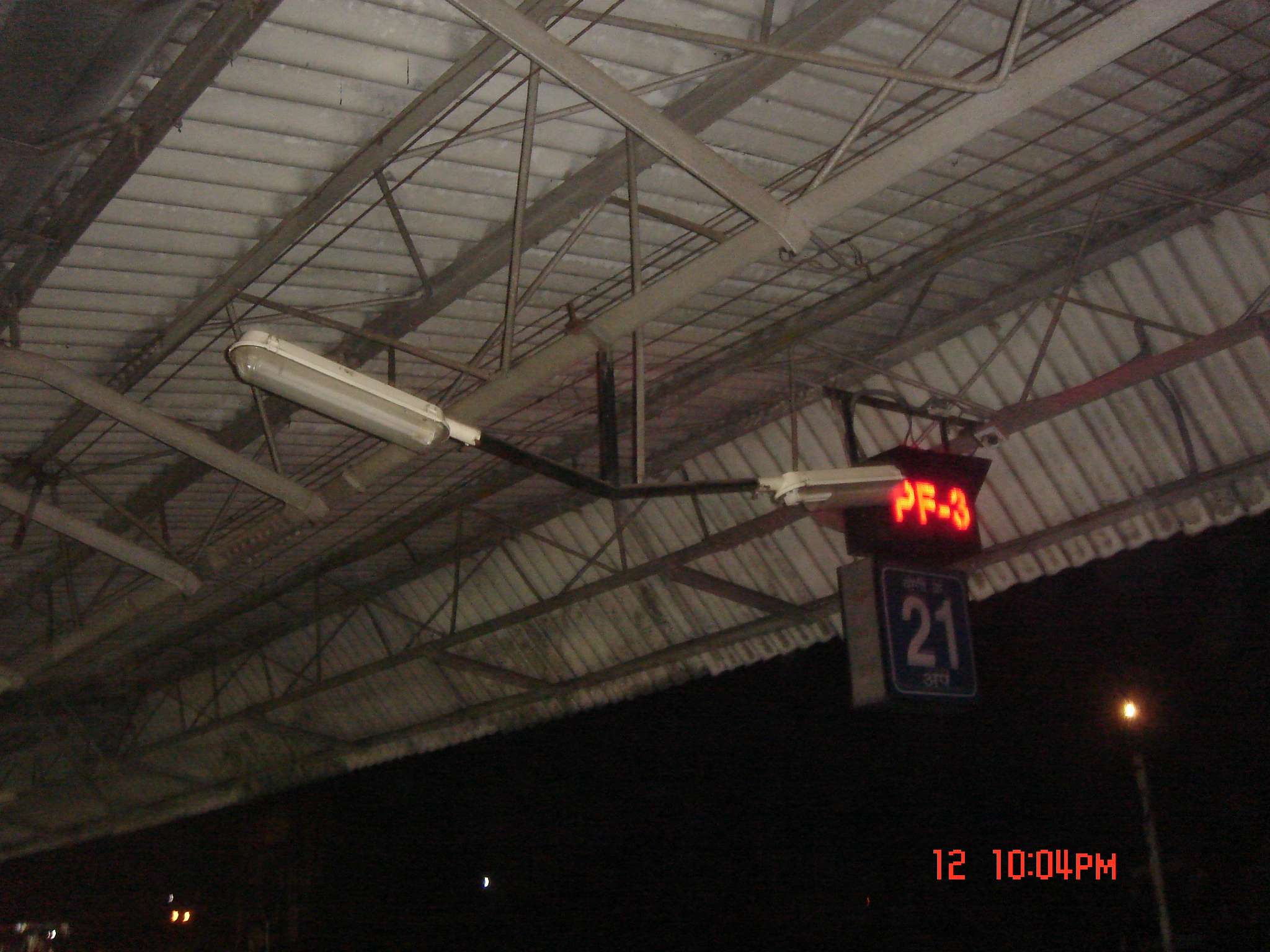
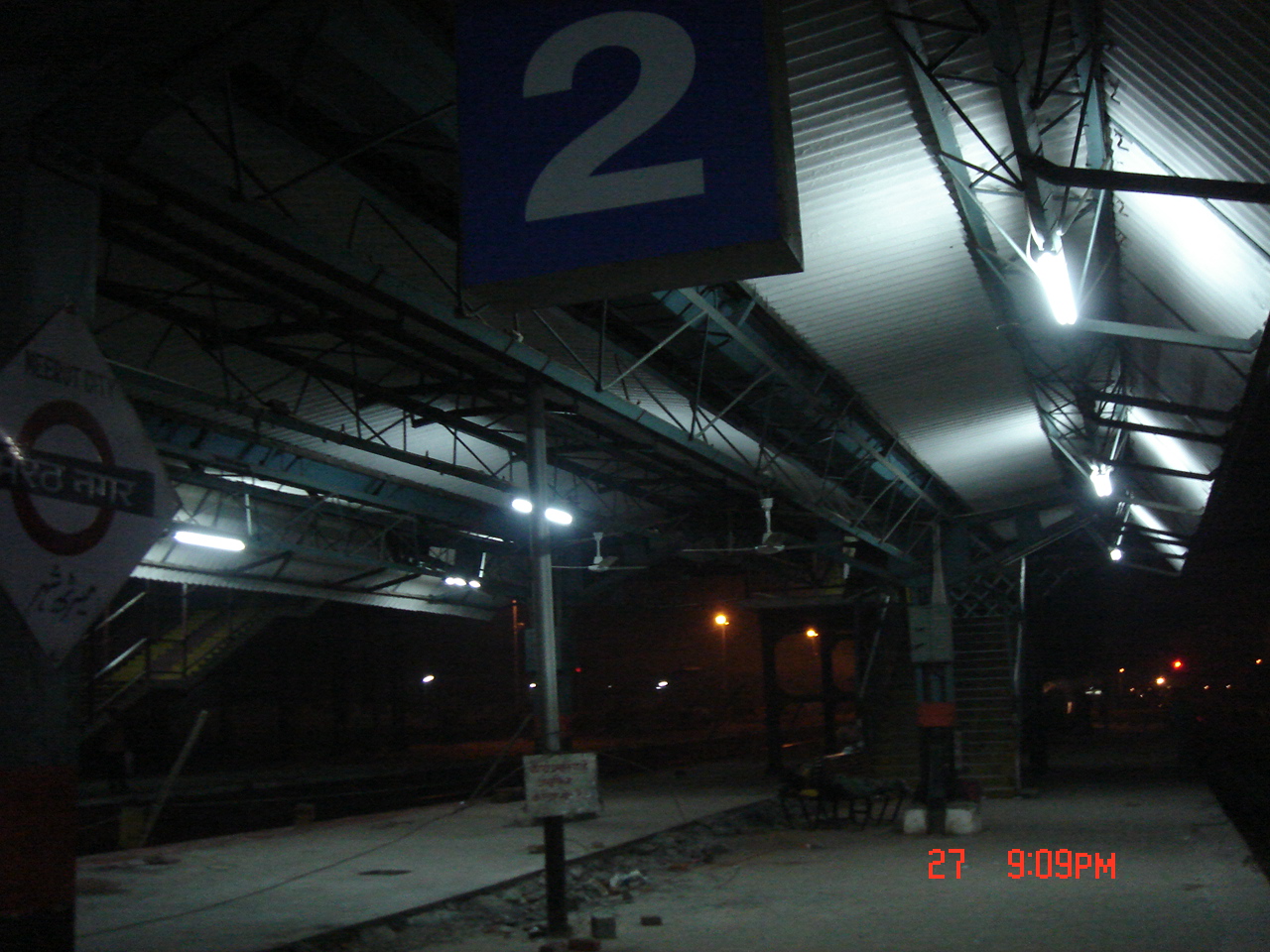
- High mast towers shall only be preferred where there is restriction of installation of pole due to road traffic, area for illumination is large and of circular or rectangular type and where poles affect the view of the building or heavy vehicle movement.
- High mast tower provide space illumination having psychological effect on the person moving around
- High mast tower consumes more power as compared to low height poles therefore selection of high mast tower shall be done carefully. Timers shall be inbuilt in the design for full, partial and semi-partial switching on/off as per the predicted traffic movement.
- High bay lighting is preferred for concourse illumination at platform. Space illumination is qually important for places such as concourse as it gives the feeling of vastness of area.
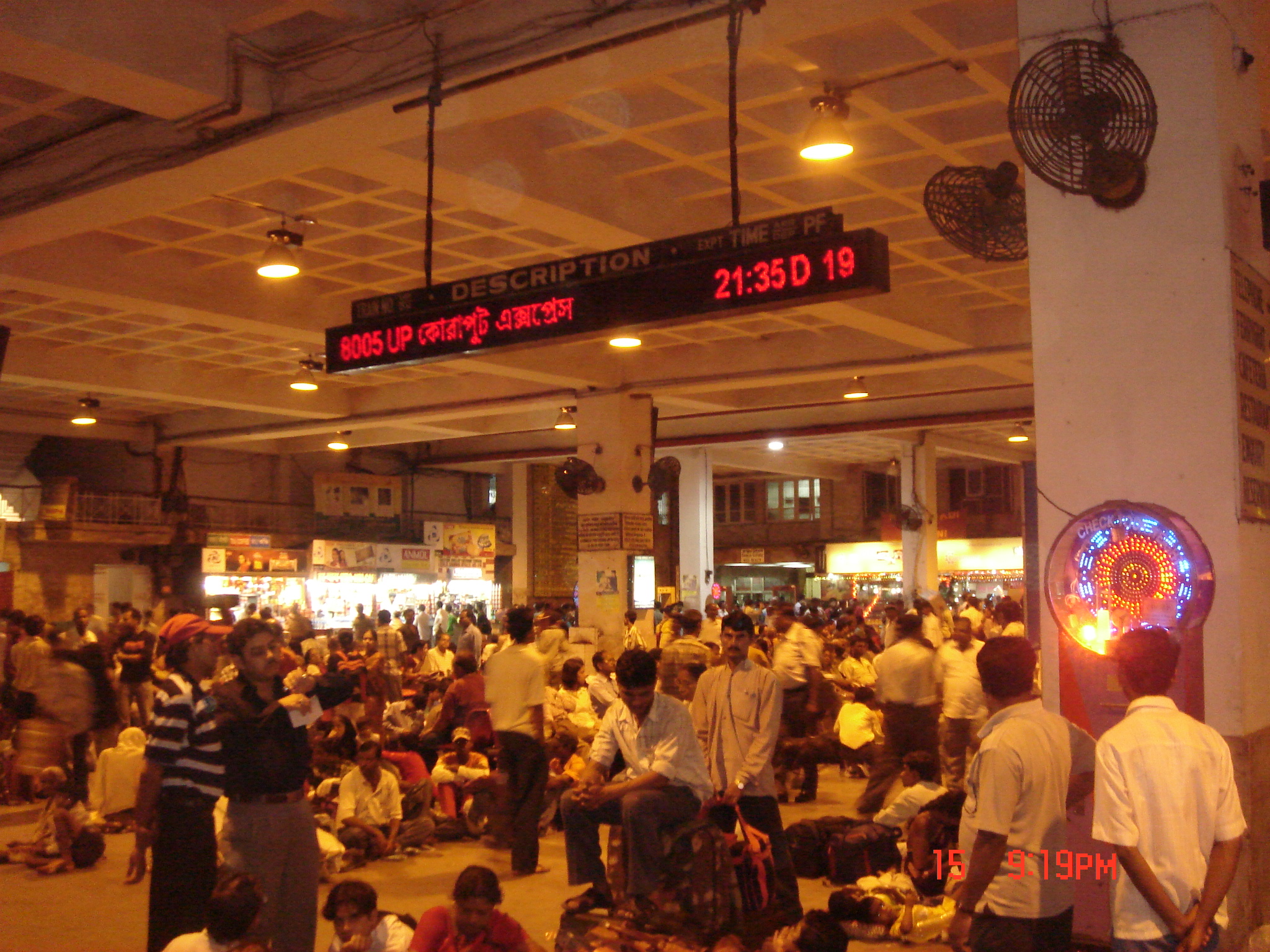

- Natural Lighting by inserting transparent sheets in PF shelter is very important and plays an important role in improving illumination during day time particularly when one side of the PF is covered by station building.

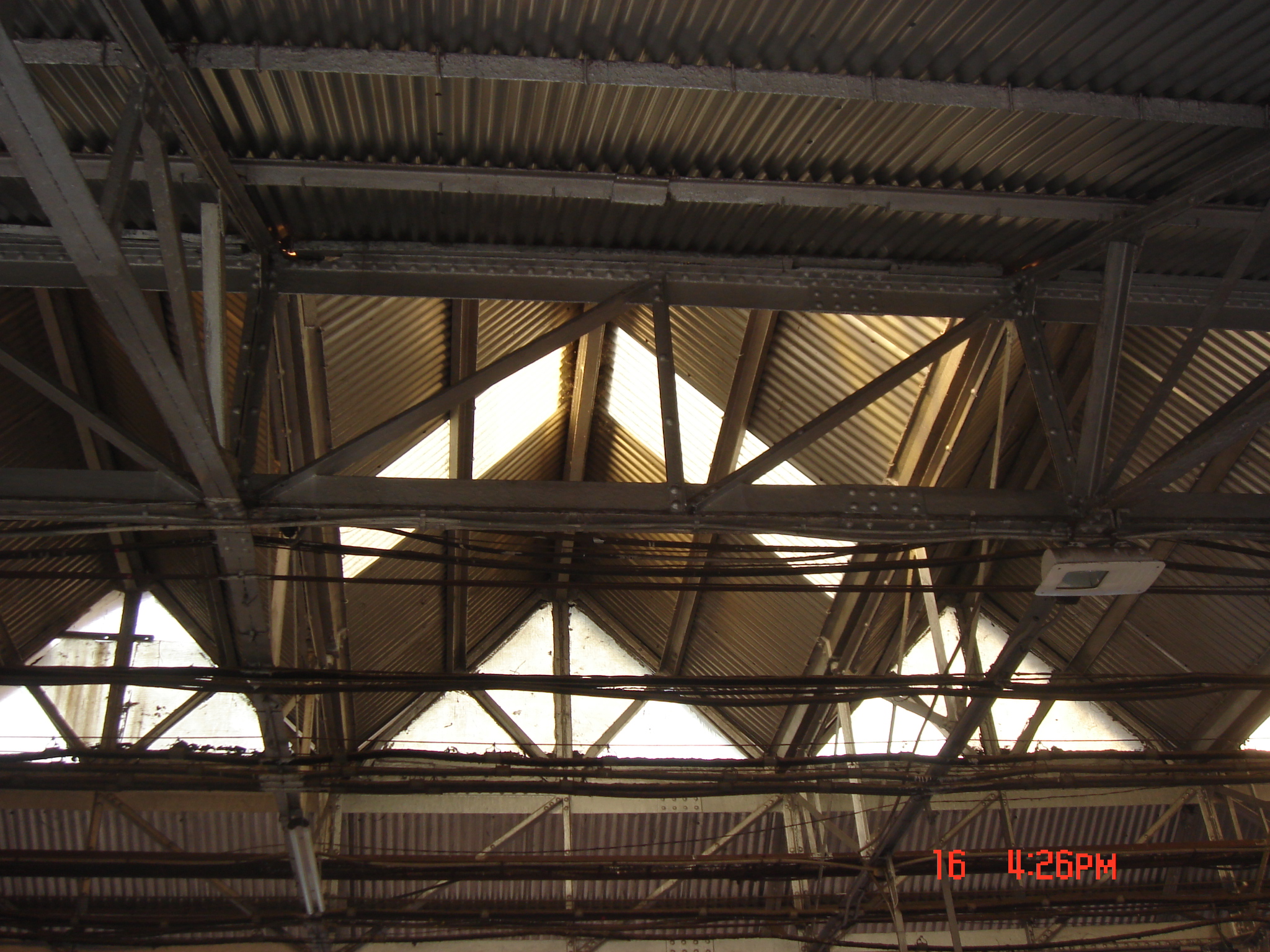
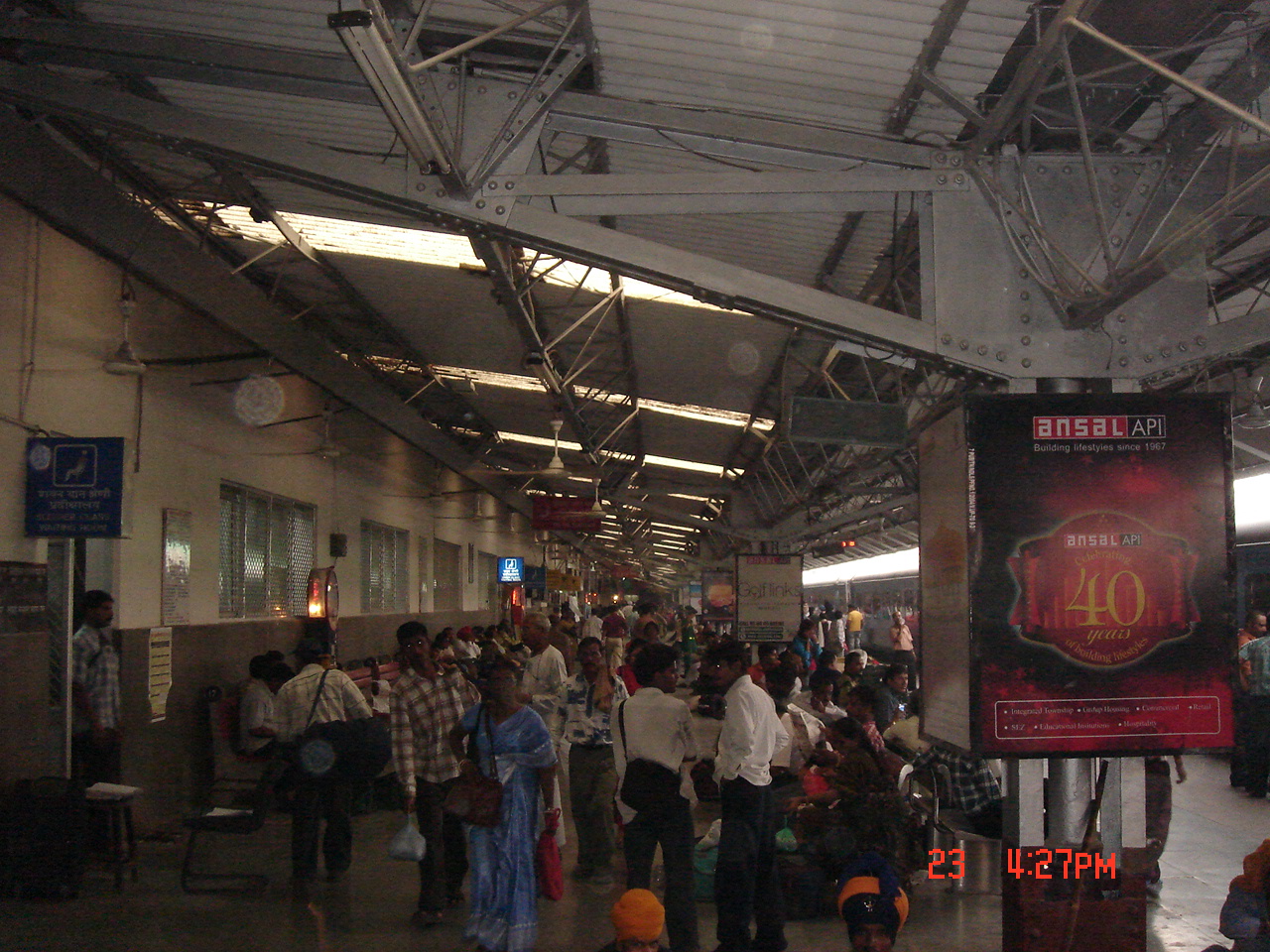
Illumination level defined for corridors is much lower but higher size fittings are provided at some location. This situation arises in view of the contract system where sometimes it is easy take up the job through the variation system.
- Luminaries help in reducing lumen wastage and directing it to working plane.
- Selection of luminaries shall be as per structure of the room and working plane. In longitudinal area such as a covered area of Railway platform, T5 mounted parallel to track is preferred.
- While designing an illumination scheme for Railway station involving security of passenger, few lamps shall be connected to a battery source to avoid complete darkness during the period of power failure for the intervening period before power supply restores or emergency backup starts.
- 100% lights at platform shall be used only during train timings (active hours) and 30% during leisure or inactive hours. Change of illumination from 30% to 100% just before arrival of the train has a good psychological effect as well giving a pre-warning of the arrival of a train within a short time and get ready.
Fan
- Extensive service duty with working for almost 24 hours during summer in 24×7 buildings.
- Selection of fan size shall be decided based on plinth area
- Blade pitch or the angle with the horizontal shall be between 120-150
- BEE has defined service value of more than 4 for best result. 1200mm sweep fan delivers 210cum/min air.
- Mounting of fan shall be such to maintain a gap of 24″ between ceiling and fan blade. Using ceiling fans at slow speed along with air-conditioner will help in increasing the thermostat setting to a comfortable value of 260C.
- Electronic regulator is commonly used now-a-days. Energy consumption at step 1 is almost half as compared to full step.
- Ceiling fans are suitable for the enclosed area. Heavy duty air circulators are more suitable for covered platform. Heavy wind damages the lade angle and deforms the mounting, sometime even making it unsafe.
- Fans are provided with fixed and running capacitor. The speed drops if the value deteriorates with time. Timely replacement of capacitor is necessary. This should be done as a must change item along with some cleaning/painting schedule as this is a low value item. One can find many fans rotating at slow speed during a visit to a Railway Station.
- The latest to find energy conservation features are in BLDC motor fan with efficient control. For further reading :https://www.bijlibachao.com/fans/review-superfan-bee-5-star-regular-fan.html
Air Conditioner
- Air conditioning load is gaining momentum with rising income and reducing prices.
- Temperature setting of more than 240C during daytime and use of sleep mode during night time. Every one degree temperature rise in temperature setting increases the electricity consumption by 7%. There is a myth that lower temperature setting cools the room faster, but it is not so.
- The default setting of temperature is generally 210C and there are occasions when AC keeps on working on this set temperature and occupant feeling uncomfortable. The default setting shall be asked for change to 240C
- Use fan along with the higher setting of thermostat of air conditioners
- Air Conditioner fins directed for air flow towards the user or working plane.
- Check for air tightness of the room. If difficult, fresh air control in window ac may be closed.
- For usage of AC more than 1000hrs per year, go to BEE five star rating.
- Sprinkle water on the condenser during mid day of the summer months. Direct sunlight shall not fall on outdoor unit or window ac body Main switch shall be provided outside the office chamber to switch-off the supply if left ‘on’ inadvertently.
- Air conditioned load wiring shall be segregated from that of lighting load and switched off from main control half an hour after the scheduled office hours.
- Temperature setting of water cooler shall be for cold drinking water and not chilled water.
- Sunlight shall not fall directly on the condenser body of the air conditioner. Provide a shade if unavoidable.
- With advancement in inerter technology for air conditioner, which provides temperature control within 0.2-0.3 degree range as compared to 2-3 degree of conventional on-off air conditioner. The other advantage is of no high inrush of current thus saving on energy. For further reading: https://www.bijlibachao.com/air-conditioners/what-is-inverter-technology-air-conditioner-and-how-it-is-different-from-bee-5-star.html
Water Pumps
- Water pumps are installed for pumping water and stored in the overhead tank for supply to residential, railway station, washing line, workshop, and offices is an important area of energy consumption.
- Select pump of suitable size. Efficiency of oversize pump is low and best at rated capacity.
- Select five star pump as per BEE rating as the pumps are used for more than 16hrs a day.
- Water pumping timing shall be adjusted for non-peak hours electricity demand
- Water pumping through diesel engine shall be avoided and overhead capacity shall be used as an emergency reservoir to full extent
- Use the electrical water level controller to switch off the motor directly as soon as the tank is filled up
- Power factor shall be unity
- Remote operation of pump and valves with online monitoring is helping in energy saving.
- Provide maintenance free pipe line joints in large dia. Pipe lines and must change items of rubber gasket in other pipelines.
-
The costs of pumping water can be calculated as C = 0.746 Q h c / (3960 μp μm) where C = cost per hour; Q = volume flow (gpm); h = head (ft); c = cost rate per kWh; μp = pump efficiency; μm= motor efficiency
-
Such calculations are helpful in counseling of the user towards the value of water and the role of each factor in unit cost of water supply.
Workshop and Yards
- Electric energy is consumed in the operation of machines, blower, compressor, cranes etc. The efficiency of these machines at part load is poor. Use power controller for variable voltage or vvvf control. The horsepower is directly proportional to cube of angular velocity of the blower motor. Frequency control shall be preferred as compared to damper control for controlling the air flow.
- Compressors are used in yards, maintenance sheds and workshop for supplying compressed air which is used for air testing of the wagon and coaching stock and working on tools operated on air and plays a vital rote towards energy conservation.
- Leakage in compressed air system shall be checked at regular intervals and attended.
- Compressor works by loading and unloading cycle. During unloading cycle, energy consumption can be reduced by lowering the voltage. Energy savers are available to achieve this function.
Use of Diesel oil for non-Traction purpose at Electrified Railway Station
Use of diesel oil for the generation of power to feed a non – traction load during load shedding is a common norm even at Electrified (Traction) Railway Stations. Traction supply at a station is tapped by providing single phase Auxiliary Transformer of capacity ranging from 5-25kVA to feed loads which are specific to train operation and a few lamps for emergency lighting. The balance of the non-traction load is either remains with no power or fed from DG supply. For conservation of Diesel Oil, either no DG set or AT supply extended to some more essential loads shall be the norm. This will help in oil conservation including likely pilferage.
R/sir
We have done extra ordinary work at Ratlam Division in pumping sector initiated by Sh Vivek Dixit than Sr DEE/P now at Coaching BCT. By some small parameters observed n matching the system head & Pump characteristics. Kurel Dam had 100 HP centrifugal pump & 60-80HP pumps were installed replaced by 35HP submersible pumps n getting same quantum of water by reduction of huge HP. the problem is electrical dept is that the Engg ppl says provide such HP pump n we provide. Here is need of System head , yield , water requirement , importantly pipe size of rising main at Tank, pipeline network & provision of NRV.
In the last 5 yr at 139 locations in entire Ratlam division around 750 HP reduced against installed 2000HP n saved PA Rs.95 Lakhs electricity. On other hand this 750 HP says roughly 0.5 Mw generation cost saved of plant cost 3 cr saved. the energy being utilized elsewhere in india.
There is need of standerisation of pump selection for RCC overhead tank in IR as it has 2.25 Lakh n 1.1Lakh ltr standard Overhead Tank with Camtech drwaing. It has rising main of 6 inch pipe whihc desires 30-40 HP pump but we are using it by 2 or 3 inch pipe by only 17.5 HP pump with the help of engg dept by providing additional pipes.
Tremendous result got more 20 location are running on it.
Some 12.5 Hp submersible pumps in the borewell replaced by 4-5HP .
A location far from Neemuch station had 20 Hp pump in bore but due to low voltage it was not successful replaced with 5 HP pump of 148 mtr head 90 LPM at duty point provided in 600 ft depth usually it could not give output but by reducing pipe size this only pumps fed water to neemuch station n colony.
As you sir aware of this area during your DRM tenor.